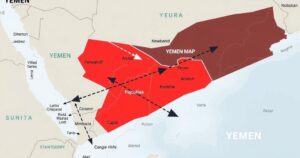The Erosion of Iranian Influence: Abandoned Military Bases in Syria
The retreat of Iranian forces from their bases in Syria illustrates chaos and a rapid dissolution of their military presence after years of involvement. Strategic locations, once vital to Iran’s influence, have become abandoned ruins, highlighting internal strife and a significant shift in local sentiments against Iranian forces.
Iran’s abandoned bases in Syria reveal signs of a hurried and chaotic withdrawal from a longstanding military presence. Remnants such as moldy food, discarded uniforms, and leftover weapons signify a sudden departure by Iranian forces and their allies. This retreat followed years of extensive military engagement, demonstrating how swiftly Iran’s influence unraveled amid escalating regional tensions.
For over a decade, Iran was a pivotal ally to Syrian President Bashar al-Assad, contributing military advisors, foreign militias, and significant resources to support the regime. The Iranian elite, specifically the Islamic Revolutionary Guard Corps (IRGC), developed a comprehensive network of underground facilities, reinforcing arms supplies and training fighters as a strategic counter against Israel.
The facility near Khan Shaykhun in Idlib province was a strategic asset for the IRGC until the regime’s collapse on December 8. Concealed behind barriers, this base was identified by a notebook confirming its designation named after an IRGC commander killed in an airstrike. Even up until their retreat, life at this location appeared routine, with provisions and supplies clearly still in use.
The base now hosts armed Uyghur fighters from Hayaat Tahrir al-Sham (HTS), illustrating the rapid shift of power in the region. One fighter stated, “Iranians were here. They all fled,” unveiling the prevailing chaos left in the wake of Iran’s retreat. Documents uncovered also expose sensitive information regarding the fighters, many of whom belonged to Iranian-backed Afghan brigades.
Iran’s rationale for its military presence was to combat extremist groups and safeguard Shia holy shrines. Nevertheless, as the conflict evolved, Iran’s quick and unanticipated exit highlighted the extent of their unpreparedness. A commanding member of an allied paramilitary unit described the disorderly exit as orders were communicated at the last minute, demanding personnel to simply take their backpacks and leave.
The swift military advances against Assad’s regime develop in parallel to the psychological turmoil due to a strained relationship between the regime and Iranian allies. Internal disagreements and accusations of betrayal heightened tensions, leading to this dramatic collapse of cooperation between the IRGC and Assad’s forces.
The remnants of Iran’s influence in Syria are starkly visible, with a local recounting how the Iranian military presence was perceived as occupying forces. Many locals expressed relief at the departure of these militias, which had disrupted their lives for years with imposing military operations and mistrust. The contrast between Iranian forces and the more detached approach of Russian troops also shapes local sentiments, showing a preference for the latter.
As Syria’s new government emerges, relations with Iran appear fraught. While officials express a desire to maintain balanced ties, the once strong Iranian military foothold is weakened significantly. Any lingering Iranian presence stands unwanted, a consequence of a decade of military expansion that has resulted in extensive ruin in the aftermath of conflict. The abandoned sites evince not only a military defeat but a dramatic shift in public perception against Iran within the broader context of Syria’s evolving political landscape.
In summary, Iran’s sudden military withdrawal from Syria reveals the fragility of its years-long presence. As Iranian bases fall into disrepair and new powers assert control, the relationship between Assad’s regime and Iran has deteriorated significantly. The remnants of Iranian influence are unpopular among locals, indicating a broader change in the geopolitical dynamics of Syria.
Original Source: www.bbc.co.uk








